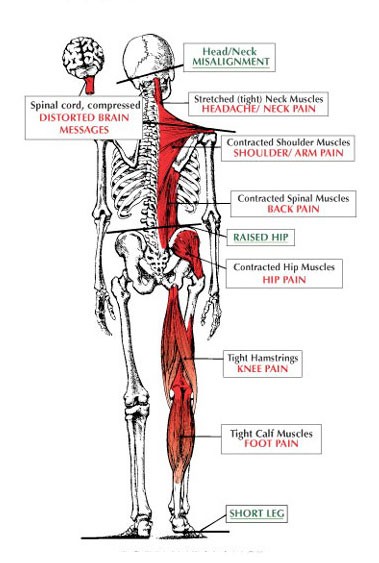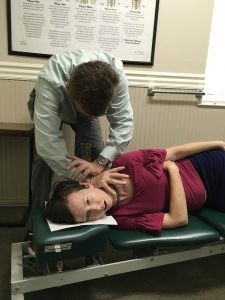Why UCC?
Why Upper Cervical Care
Find Out More
Why is what we do so Different from other Methods of Chiropractic?
Brain-to-body messages control and maintain ALL body functions. These messages are a must for healing. Trillions of nerve fibers carry these messages from the brain to the body “bottle-neck” through the small opening in the first bone in the neck (atlas) as they flow down into the spinal cord and out to every cell in your body.
If the head and neck are not in proper alignment, it can cause spinal cord compression or irritation at the point where the head and neck join, and the disruptor distorts vital brain messages to any part of your body. This can cause countless health problems and pain anywhere in the body, including organ dysfunction and other conditions that you would not normally relate to a problem originating at the top of your neck.
Here are some common problems that have responded to Upper Cervical Care:
- Acid reflux
- Allergies
- Arthritis
- Asthma
- Attention Deficit Disorders
- Auditory (ear) dysfunction
- Bell’s Palsy
- Carpal tunnel syndrome
- Chronic fatigue
- Colic
- Depression
- Diabetes
- Digestive Disorders
- Disc bulges/herniations
- Epilepsy
- Fibromyalgia
- Gastrointestinal dysfunction
- Headaches
- High blood pressure
- Hyperactivity (ADHD)
- Immune function
- Irritable bowel syndrome
- Knee pain
- Learning disorders
- Low back pain
- Menstrual disorders
- Meniere’s syndrome
- Migraine headaches
- Multiple Sclerosis
- Neck pain
- Neurological disorders
- Otitis media (ear Infections)
- Scoliosis
- Shoulder and arm pain
- Seizure disorders
- Skin disorders
- Sports injuries
- TMJ dysfunction
- Torticollis
- Trigeminal Neuralgia
- Ulcers
- Vertigo (dizziness)
- Visual (eye) disturbance
- Whiplash and many more conditions
When the weight of the head is shifted off the center of the neck and held in that position by tense muscles of the neck to cause body imbalance, it can produce stress, tension, and pressure around the brain stem. This pressure can restrict or distort the transmission of health and healing messages from the brain to the body. That area of the body serviced by the restricted brain messages will no longer function properly. This can result in health problems and pain that can be felt in any part of the body.
Why is Upper Cervical Chiropractic so Important?
Find Out More
The top two vertebrae of the spine, the atlas, and the axis are the only vertebrae in the body that do not have the means to be self-correcting. This is because the muscles which control the position of these two vertebrae receive their nerve supply from nerves which pass down through the atlas and axis and then to the muscles providing them with movement and support.
Vertebrae below this level have the means of self-correction in that they receive nerve supply to the muscles surrounding and supporting them from above as well as below. This provides the means for the rest of the spine to be self-correcting if the atlas and axis are not causing nerve pressure. It also means that if the atlas or axis are causing pressure, the muscles surrounding and supporting the rest of the spine cannot function normally.
Consider the basic construction of your body and nervous system and how it can change your health!
Your head (10-14 lbs.) rests on the bone at the top of your neck called the atlas. Wherever your atlas moves, your head moves with it. If this top bone in your neck has shifted out of position ever so slightly, no more than the thickness of a fingernail, it can move your head off-center. In an effort to keep your head over the center of the neck, your spine and pelvis will twist, pulling one hip up and one leg with it. You are now walking around on one leg that is shorter than the other.
Why do Chiropractors use Thermography?
The focus of chiropractic care is proper nervous system function. Since the nervous system controls and coordinates every function in the body, normal nervous system function becomes the core reason for good health. These nerves run from the brain, down the spinal column, and affect various organs throughout the body including your eyes, ears, lungs, kidneys, skin, and even your heart.
Chiropractic focuses on a specific condition that robs the body of normal nerve impulses. This condition is called spinal subluxation. Subluxation is defined as an abnormal positioning and/or mechanical function of the spine that interferes with the normal function of the nervous system.
By using the Tytron/thermography and comparing differences in temperature between opposite sides of the spine and comparing them to established normal values, a chiropractor can make important decisions about the health of your nervous system and what care may be needed. The results of these tests are readily available to discuss and view.
This is a case study published in a professional journal of one of Dr. Forest’s cases:
Upper Cervical Chiropractic Care for a 10-year-old Patient with Complex Regional Pain Syndrome; Lauren Millman, D.C.; Thomas Forest, D.C.; Todd Hubbard, D.C. “Journal of Upper Cervical Chiropractic Research”- October 10, 2012-Pages 85-91
Abstract
Objective: To review the effectiveness of chiropractic care using a specific upper cervical chiropractic technique in the case of a 10-year-old male patient with Complex Regional Pain Syndrome (CRPS.)
Clinical Features: This case report describes the changes in subjective pain and weight-bearing following specific upper cervical chiropractic care of a 10-year-old boy with Complex Regional Pain Syndrome.
Intervention: Upon initial examination, indications of upper cervical subluxation were evident, based upon radiographic findings, thermography, and leg length inequality. Chiropractic care utilizing a specific upper cervical technique protocol (Blair Upper Cervical technique) was administered in order to correct the upper cervical subluxation.
Outcome: Although still an ongoing case, the fully published report is a detailed 10-month record of this 10-year old boy’s response to his upper cervical technique, including a decrease in symptoms associated with CRPS Type 1, noting them as less frequent of less duration and decreased severity.
Conclusion: Due to the marked and timely improvement of this patient, this case report exhibits the need for further investigation into the use of a non-invasive, light-force, cost-effective, and highly specific approach to correcting upper cervical subluxations which have an effect on this condition and potentially similar cases.
Key Indexing Terms: upper cervical chiropractic, Blair Upper Cervical technique, Complex Regional Pain Syndrome, Reflex Sympathetic Dystrophy, spine manipulation, chiropractic, thermography.
Effects of Body Imbalance/or Spinal Misalignments
“Compression of the spinal cord and traction on the brain stem may give rise to symptoms and findings which tax one’s diagnostic and prognostic ability. Such injuries may be responsible for many of the so-called psychoneurotic symptoms such as dysphasia, difficulty in concentrating and remembering, loss of balance, tinnitus, transient deafness, dysphagia, restlessness, nervousness, depression, insomnia, and vague pains and paraesthesias of the lower extremities.”
– Ruth Jackson, M.D., Vol. 24 of Clinical Orthopedics
Read more: http://www.biomedcentral.com/content/pdf/1471-2474-12-219.pdf
FREE Newsletter
Get your FREE Monthly Newsletter
Pleasanton Chiropractic
Dr. Thomas Forest and Dr. Francis are Pleasanton Chiropractors who serve patients from Alamo, Concord, Danville, Dublin, Livermore, Pleasant Hill, San Ramon, Tracy, Walnut Creek.

Contact Details
- 4224 Stanley Blvd Pleasanton, CA 94566
- (925) 846 3357

